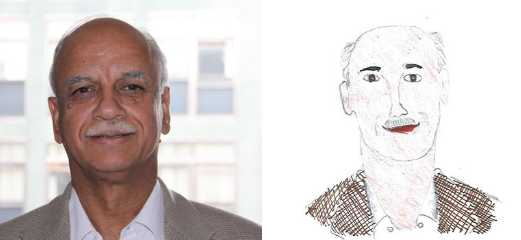
Professor Shak Qureshi explains innovations in cardiology over the course of his career.
I have worked at Evelina London since 1985 when I was a research fellow in paediatric cardiology, after my training. I've seen the department grow rapidly, and had the pleasure of being the head of the cardiology service between 2004 and 2012.
Before this though, I worked in Pakistan, as I was asked to set up a department of paediatric cardiology in Rawalpindi. Whilst I was there, I organised a few visits from cardiology and surgical teams from the UK, including Philip Deverall and Mike Tynan from Guy’s Hospital.
Working together on intervention opportunities in the catheter labs (where a variety of procedures are performed under X-Ray guidance), was where I had my first formal encounter with Mike, and we were to go on to have many more. We discussed my achievements in Rawalpindi but also my frustrations and the possibility of returning to the UK.
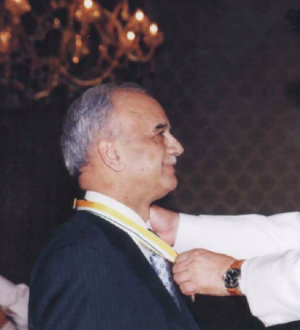 I had a fondness for Pakistan and continue to visit there helping them to develop their services. In 2004, I was awarded one of the highest civilian awards by the Government of Pakistan for my services to medicine.
I had a fondness for Pakistan and continue to visit there helping them to develop their services. In 2004, I was awarded one of the highest civilian awards by the Government of Pakistan for my services to medicine.
But back to the beginning; I came back to the UK in 1985, and having been thrown in at the deep end, it was a pleasure to be guided around the department in Guy’s Tower by the Sisters, Sheridah and Trish, who ran Rothschild ward. They made the task of settling down into the post easier. In the catheter lab, I was helped enormously by Sister Freda Cole, who guided me about the equipment preferences of Mike Tynan and Owen Jones, my predecessor.
I was ambitious about interventional paediatric cardiology and was looking for an opportunity to work again with Mike Tynan. I saw that he was innovative and had a different attitude from other paediatric cardiologists I had come across. He was keen to push the boundaries and he pushed himself and others around him out of their comfort zones. This was the basis for pushing the frontiers.
In March 1988, I was lucky enough to be appointed as a consultant paediatric cardiologist at Guy’s Hospital, where I have been in post ever since. Fairly quickly, Mike and I started working on several areas of interventions.
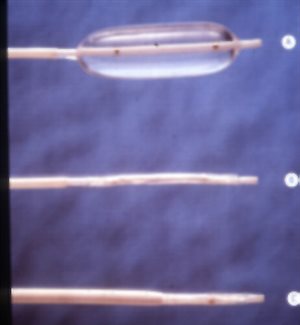 I had assisted Mike in 1986 in Europe’s first catheter closure of patent arterial duct using a Rashkind umbrella device, and so my interests in interventions had been stimulated then. From 1989, Mike and I started working on several interventional projects around the same time. These included the development of balloons specifically for use in keyhole surgery in babies. Up to then, we had been using balloons, designed for adults, and then using them for purposes for which they were less suitable. As a result of working together with a company in the USA, (NuMED), the Tyshak balloon was developed. It is now widely and routinely used around the world. This is basically a technology that opens up any narrowed heart valve or artery and allows it to be inflated with a balloon filled with dye, avoiding the need for surgery. We were talking to the owner of NuMED during one of his visits to London and were arguing about what to call our invention. The Qureshi-Tynan balloon or Tynan-Qureshi balloon was suggested, but this didn't roll off the tongue easily. The owner phoned us from Heathrow airport on his way back to USA and told us the name had suddenly come to him. He said it should be called Tyshak, because he had come across a shop at Heathrow – Tie-Rack – and that is how the name came about!
I had assisted Mike in 1986 in Europe’s first catheter closure of patent arterial duct using a Rashkind umbrella device, and so my interests in interventions had been stimulated then. From 1989, Mike and I started working on several interventional projects around the same time. These included the development of balloons specifically for use in keyhole surgery in babies. Up to then, we had been using balloons, designed for adults, and then using them for purposes for which they were less suitable. As a result of working together with a company in the USA, (NuMED), the Tyshak balloon was developed. It is now widely and routinely used around the world. This is basically a technology that opens up any narrowed heart valve or artery and allows it to be inflated with a balloon filled with dye, avoiding the need for surgery. We were talking to the owner of NuMED during one of his visits to London and were arguing about what to call our invention. The Qureshi-Tynan balloon or Tynan-Qureshi balloon was suggested, but this didn't roll off the tongue easily. The owner phoned us from Heathrow airport on his way back to USA and told us the name had suddenly come to him. He said it should be called Tyshak, because he had come across a shop at Heathrow – Tie-Rack – and that is how the name came about!
This was one of many ‘firsts’ for our expanding department. The 1990s was an exciting time. An off-shoot from the Tyshak balloon was the development of a balloon for dilation of the aortic valve in the unborn baby. Babies with this defect had poor survival in those days. If the narrowed valve could be opened, we thought it would give the fetus a better chance of survival. In a world first, this procedure was performed at Guy’s Hospital with Mike Tynan, Darryl Maxwell, an obstetrician, and Lindsay Allan, a fetal cardiologist, who was the first such specialist to be appointed in the UK and Europe – again due to Mike’s forward thinking.
Fetal cardiology, which allows babies to be diagnosed with heart conditions before they are even born, was pushed to different levels in this decade, with subsequent appointment of Gurleen Sharland and John Simpson. Then, there was Eric Rosenthal from the adult cardiology department at Guy’s Hospital, working on the use of laser technology. He joined our department and we explored the use of lasers in a particular congenital heart defect, which led to us performing the world’s first laser valvotomy in 1991. Later, after evaluating the role of radiofrequency heat, the laser was replaced and now this technique is used widely around the world.
One of the areas of weakness in our department at that time was modern congenital cardiac surgery, so we appointed David Anderson as consultant paediatric cardiac surgeon, who took surgery for congenital heart disease into the modern era. With David Anderson and Conal Austin, we were the first unit in the UK to start hybrid surgery for a particular complex heart defect (hypoplastic left heart syndrome) in 2005. This team collaboration has played a huge part in the developments within the department. Mike had a great ability to spot talents and direct people into different areas of our sub-specialty. Ted Baker developed the imaging area, especially MRI.We also appointed Reza Razavi, who then expanded the whole MRI department, with a large team of consultants running the service, and developed it into a world class service.
I encouraged many paediatric and adult cardiac sub-specialty departments to take responsibilities in developing their areas and was happy to support them so that they could flourish. The adult congenital heart disease service has been run by Cathy Head and her team. Within the catheter laboratory, we trained a nursing sister, Soodevi Boolkah, to run the laboratory in a role that did not exist in the UK or Europe. She assists the interventional team, helps to perform the most complex procedures and helps to train the trainees.
Throughout those years of rapid advancement at Guy’s Hospital, the department enjoyed excellent collaboration with all the other paediatric sub-specialties. Within the interventional area, one aspect that most external visitors from the UK and abroad have been inspired by was how, at consultant level, we were able to push the philosophy of working together for some of the most complex interventions in order to produce the best results for patients. This type of approach and collaboration is now used in many units around the world, whereas previously, consultants worked as single operators.
Locally and nationally, we have always been about sharing knowledge to provide the best care, and collaborating with outreach hospitals, taking the service nearer to patients’ and their parents, and our networks have always been strong. Mike, and (after his retirement) I, used to do an outreach clinic at Merthyr Tydfil, all the way over in Wales!
There are patients who always stick in my mind, and we’ve had our fair share of media attention; one patient, who I operated on as a baby, got coverage in the Evening Standard 25 years later, and it's great to hear people doing so well. Then there was the BBC documentary for QED in 1992 where we highlighted for an innovative interventional procedure, trying to remove heart muscle by keyhole methods in order to remove narrowing within the heart.
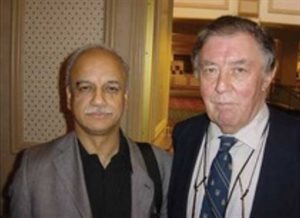 During my time at Guy’s Hospital and then Evelina London, the paediatric cardiology department and its subspecialty expertise has become recognised around the world as being world class. Personally, the speciality has been good to me and helped me to fulfil my ambitions to help patients all around the world, by training other doctors. Mike certainly played a huge part in the early years and obviously saw some potential in not only me, but also in many other colleagues within our department, who have continued to help promote the department.
During my time at Guy’s Hospital and then Evelina London, the paediatric cardiology department and its subspecialty expertise has become recognised around the world as being world class. Personally, the speciality has been good to me and helped me to fulfil my ambitions to help patients all around the world, by training other doctors. Mike certainly played a huge part in the early years and obviously saw some potential in not only me, but also in many other colleagues within our department, who have continued to help promote the department.
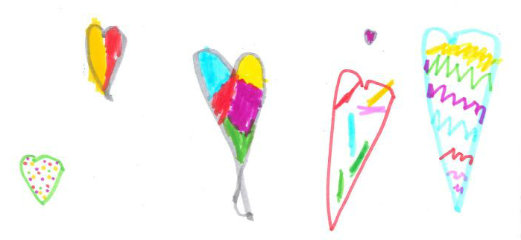
Thank you to the children and young people who have so brilliantly illustrated our history pages.